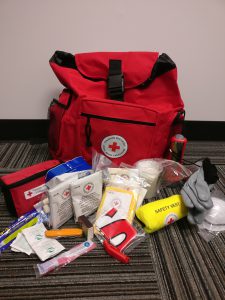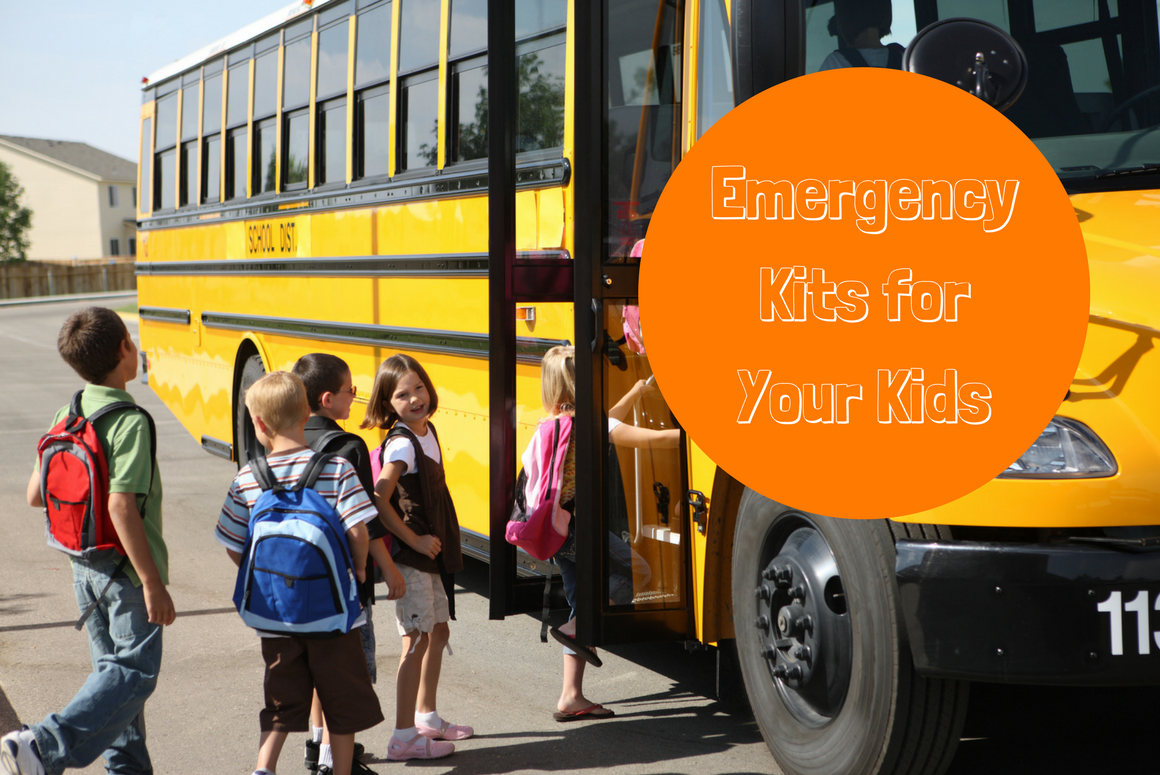Emergency kits are a key part of any household’s emergency plan, but they shouldn’t be limited to just your home! We can prepare emergency kits for use anywhere, anytime you need it – your car, the office, the family cabin by the lake, your RV, the kids’ sports bags. The list goes on!
Preparing emergency kits for your kids is an important consideration, especially when they’re out of the house at school or participating in after-school or weekend activities like sports.
Different types of emergency kits for your kids
School Emergency Kits: Kids spend many hours each weekday in school, so it makes sense for them to have a personal emergency kit to store in their locker or keep in their backpacks for use in any emergency, from a lockdown to an evacuation. This kit isn’t going to be as robust as their kit at home, but it will provide them with a few extra items to supplement what the school provides for students in an emergency.
Sports Emergency Kits: Whether your kids are at practice or heading to a game, having a kit dedicated for their sports bag is a great idea, as you never know when they might need it. Whether the team bus gets stranded on the side of the road for a few hours, or there’s a natural disaster like an earthquake or flood, your kids will have everything they need until they are reunited with you.
What to include in emergency kits for your kids
We’ve put together a few considerations for both types of kits as you make sure your kids are prepared for any emergency while they’re outside the home.
- Non-perishable food/snacks – think dried fruit, and granola or protein bars, and even some hard candies (for comfort and energy)
- Water supplies – emergency pouches are great, but can be tough for little ones to get into, so pack a small water bottle instead
- Small flashlight or headlamp – make sure the batteries are regularly tested so that they’ll work when light is needed
- Emergency whistle – get a quality one so that you know it will work and be heard in the event your child needs to get someone’s attention
 Emergency blanket – this can be used as a poncho, something to sit on, a way to keep warm, and even as a temporary shelter
Emergency blanket – this can be used as a poncho, something to sit on, a way to keep warm, and even as a temporary shelter- First aid kit – even the most basic of kits contains everything your kids might need to manage a variety of situations (check out this one from Canadian Red Cross – ePACT members get 20% off too!)
- Specific medications or equipment – if your kids have prescription medications or allergy medicines, include them in the first aid kit, and make sure they know how and when to use them. Note: be sure to check with your school for any policies around medication storage and use.
- Emergency information – if your school isn’t using a tool like ePACT, put a copy of your child’s emergency documents in their first aid kit (use a Ziploc back to keep it dry), so that they can reference it when it’s needed, and you don’t have to worry about them trying to remember all the details by heart. Don’t forget to include your out-of-area contact’s information too in case of a widespread local disaster like an earthquake.
- Comfort items – this is specific to each child and can be a family photo, personal item like a handkerchief, or even a small toy or stuffed animal. Anything that helps your child feel safe and secure in a stressful situation. Read our blog post, Back to School: Comfort Kits for more ideas.
- Cellphone and spare charger – disposable cellphones are great for emergency-use only and can be easily tucked in a backpack along with the charger or spare battery. This gives your kids a way to connect directly with you in an emergency, especially if there is a delay in the school or sports team connecting with parents
Here is a great list of Kit Contents from the Canadian Red Cross – use it to plan your kid’s kits and also those for your home, car, boat, or workplace too! You can even get your kids involved with helping to build emergency kits with the “Are You Ready! Checklist” from FEMA.
Take the time to educate your children on how to use the items in their kit, let them know that it’s only to be used in an emergency, and to let you know whenever they use something so that you can replace it right away. What are some items you like to include in your kids’ emergency kits?
Terms and Conditions
All content provided on this blog is for informational purposes only. The owner of this blog makes no representations as to the accuracy or completeness of any information on this site or found by following any link on this site. The owner will not be liable for any errors or omissions in this information nor for the availability of this information. The owner will not be liable for any losses, injuries, or damages from the display or use of this information. This policy is subject to change at anytime.

